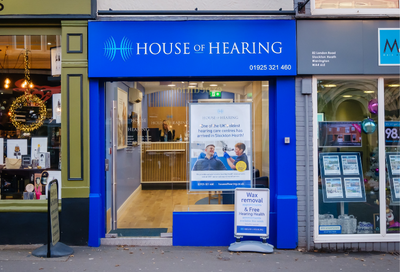 (14).png)
Hearing Health and Dermatology
When it comes to skin conditions, we usually associate these with symptoms such as rashes on our arms or dry skin on our faces, but a lot of people might not realise that they can also affect our ears. Many common skin related conditions such as dermatitis and eczema can irritate the ears and cause issues with your hearing health. In this article, we will be looking at the relationship between your hearing aids and your skin, which conditions can cause issues with your hearing and how to best manage skin related issues.
Infections and Temporary Irritations
Like anywhere in the body, every part of the ear can be susceptible to various forms of irritation and infections including the eardrum (myringitis), vestibular system (vestibular neuronitis) and bones (mastoiditis). The skin on your outer ears can also fall victim to infection and irritation:
- Otitis Externa – More commonly known as “Swimmer’s Ear”, Otitis Externa is the inflammation of the ear canal and can often be brought on by things such as fungal infections or having too much water in your ears. Having excess water in your ears creates a moist environment that allows bacteria to multiply quickly, resulting in an infection. The infection can cause the ear canal and outer ear to become red and itchy and can even cause fluid discharge. If left untreated, the condition can lead to issues such as bone and cartilage damage, temporary hearing loss and long-term infections, but if caught early the condition can easily be treated using steroids and antibiotics.
- Hearing Aids and Earbuds – Wearing hearing aids or earbuds for prolonged periods of time can cause irritation to your ear canals due to a build-up of bacteria. To avoid this, remove your hearing aids and earbuds when they aren’t actively being used and clean them regularly to ensure there isn’t an environment for harmful bacteria to grow.
- Contact Dermatitis - Skin irritations caused by allergens and other irritants is called contact dermatitis. It is often characterised by red irritated skin which can also be itchy and sometimes flaky. Some common skin irritants include skin and hair care products, perfumes, and earrings (mainly those made from nickel). The irritation caused by contact dermatitis can make it uncomfortable to wear hearing aids or make it tempting to put things in our ears to calm the irritation. Usually, the rashes and discomfort of Contact Dermatitis will naturally go away but for longer term cases it can be treated with emollients and, in more severe instances, topical steroid creams.
- Allergies – Various allergies can affect your ears and cause irritation to the ear canal and outer ear. Allergens such as pollen, dust and pet dander can get trapped in hearing aids, which can cause an allergic reaction to the wearer if the hearing aid hasn’t been cleaned properly. Some of the components of hearing aids can cause inflammation of the skin. The domes on the end of hearing aids can be made from several different materials such as acrylic, epoxy resin and silicone which some people can be allergic to. If you have allergies to any of these materials, you can ask your audiologist about hypoallergenic hearing aid domes. Like Contact Dermatitis, allergic reactions on your skin can be treated with steroid creams and over the counter antihistamines such as loratadine and fexofenadine.
Chronic Skin Conditions
Skin conditions are common in the UK with an estimated 60% of the population suffering from some kind of skin condition in their lifetimes. Like all medical conditions, there are many kinds of chronic skin conditions. Here are some common skin conditions that can affect your hearing:
- Psoriasis – Caused by the over production of skin cells, psoriasis is a skin condition which causes flaky scaly patches to appear on the body. Psoriasis patches usually appear on people’s elbows, knees, scalp, and lower back but the condition can appear anywhere on the body, especially our ears. Due to the quick regeneration time for skin cells in those with psoriasis (estimated between 3 to 7 days instead of the usual 3 to 4 weeks), flaky skin is a very common problem. In areas such as ear canals or the outer ear, this can cause blockages in the ear canal and result in temporary hearing loss.
- Eczema– Atopic Dermatitis, also more commonly known as eczema, is a chronic condition that causes the skin to become itchy, dry, cracked and, on rare occasions, to bleed. The condition predominantly affects children, and many “outgrow” the condition but for some it’s a constant in their lives. Eczema can appear on most parts of the body, including our ears, making it uncomfortable to wear hearing aids which can aggravate the inflamed area. If you have eczema in your ears it’s recommended to only wear your hearing aids when you need to and to use treatments such as antihistamines and topical corticosteroids to help reduce the irritation.
- Seborrheic dermatitis – Seborrheic dermatitis is the inflammation of the skin in areas which have a lot of sebaceous glands such as your face, chest, and scalp. The exact cause of seborrheic dermatitis is unknown, but it is believed to be linked to a type of yeast that lives on our skin. The condition can cause discomfort to both the outer ear and the ear canal as well as blocked ears from flaky skin. Despite being a chronic skin condition, seborrheic dermatitis is a condition that comes and goes from time to time and can be maintained and treated using over the counter creams, lotions, and ointments.
At House of Hearing, our experienced Clinical Ear Care team are trained to recognise and treat a variety of ear health issues using our medical-grade equipment. If you have concerns about your hearing health or are currently experiencing difficulties with your hearing, then book an appointment with one of our expert team today by calling 0131 220 1220 or visiting www.houseofhearing.co.uk/book-an-appointment
Our Clinics
All House of Hearing clinics are in town centre locations and accessible to public transport and parking. Home visits also available if mobility is an issue.


.png)
.png)
.png)

.png)
